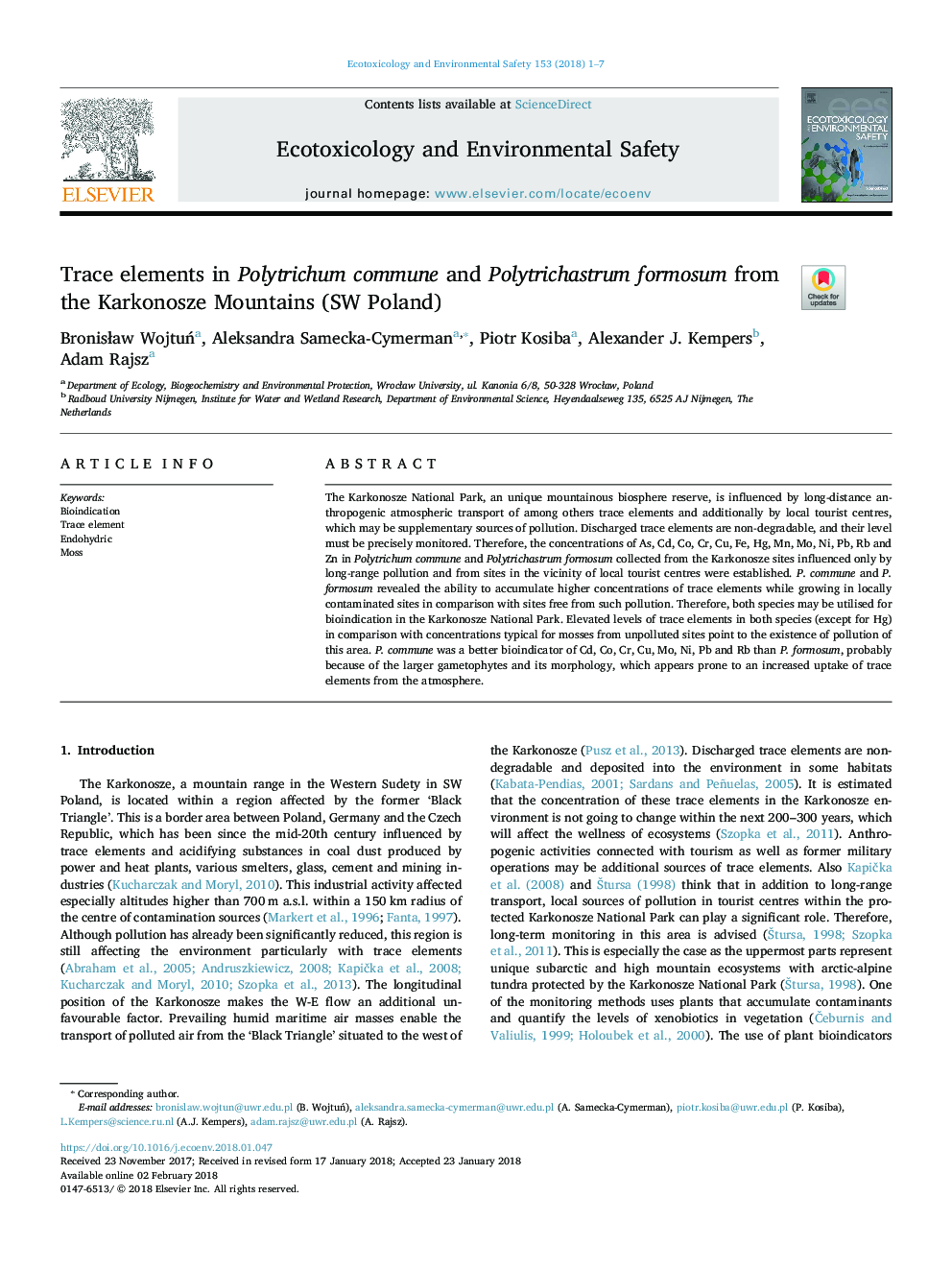| Article ID | Journal | Published Year | Pages | File Type |
|---|---|---|---|---|
| 8854208 | Ecotoxicology and Environmental Safety | 2018 | 7 Pages |
Abstract
The Karkonosze National Park, an unique mountainous biosphere reserve, is influenced by long-distance anthropogenic atmospheric transport of among others trace elements and additionally by local tourist centres, which may be supplementary sources of pollution. Discharged trace elements are non-degradable, and their level must be precisely monitored. Therefore, the concentrations of As, Cd, Co, Cr, Cu, Fe, Hg, Mn, Mo, Ni, Pb, Rb and Zn in Polytrichum commune and Polytrichastrum formosum collected from the Karkonosze sites influenced only by long-range pollution and from sites in the vicinity of local tourist centres were established. P. commune and P. formosum revealed the ability to accumulate higher concentrations of trace elements while growing in locally contaminated sites in comparison with sites free from such pollution. Therefore, both species may be utilised for bioindication in the Karkonosze National Park. Elevated levels of trace elements in both species (except for Hg) in comparison with concentrations typical for mosses from unpolluted sites point to the existence of pollution of this area. P. commune was a better bioindicator of Cd, Co, Cr, Cu, Mo, Ni, Pb and Rb than P. formosum, probably because of the larger gametophytes and its morphology, which appears prone to an increased uptake of trace elements from the atmosphere.
Keywords
Related Topics
Life Sciences
Environmental Science
Environmental Chemistry
Authors
BronisÅaw WojtuÅ, Aleksandra Samecka-Cymerman, Piotr Kosiba, Alexander J. Kempers, Adam Rajsz,
